VFD 熒光顯示器正常工作時(shí),其燈絲加上2.5~3.8 V 交流電壓(根據(jù)型號(hào)而異)后��,用手擋住外界光照射�,應(yīng)能隱約看到橫向燈絲呈微紅色。
2012-03-14 15:05:54 4606
4606 (伊勢(shì)電子工業(yè)株式會(huì)社)生產(chǎn)的真空熒光顯示器(VFD)模塊�,只要通過10M以及網(wǎng)口或串行口輸入要顯示的信息內(nèi)容,要發(fā)布的信息就可以顯示在VFD上�����。
2020-10-21 10:45:06 2072
2072 
這里再次使用使用真空管的簡(jiǎn)單推挽放大器電路����。這種設(shè)計(jì)非常簡(jiǎn)單,如果構(gòu)建得當(dāng)����,會(huì)帶來良好的音頻質(zhì)量��?����;ヂ?lián)網(wǎng)上電路的每個(gè)塊都有很多����,所以我將對(duì)此進(jìn)行一些詳細(xì)介紹�。在查看該放大器的實(shí)際設(shè)計(jì)之前,讓我們快速瀏覽一下其規(guī)格�����。
2023-06-26 09:01:54 289
289 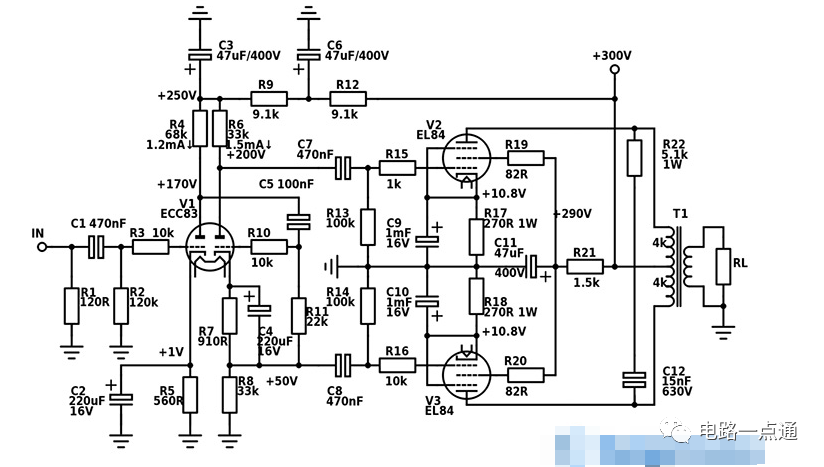
目錄#電子器件電子管(真空管�����、充氣管)固態(tài)電子器件(晶體管的分類及與真空管的對(duì)比)#電子技術(shù)集成電路技術(shù)微處理器裸晶(Die)的概念模擬電子技術(shù)數(shù)字電子技術(shù)#電子電路集成電路(物理量的分類)模擬電路
2021-07-30 06:06:04
`2002 VFD 熒光顯示器FUTABA M202MD28A 20X2 20*2 DISPLAYS LCMhttps://item.taobao.com/item.htm?id
2020-11-16 12:35:56
400D/H/L真空管電壓表操作和維修手冊(cè)
2018-10-31 11:46:20
00412-90003 (November 1968) The 412A/AR DC Vacuum Tube Voltmeter is a discontinued product. This manual is provided for information only.
2018-09-21 10:33:19
``VFD 2002 20*2 FUTABA日本雙葉熒光顯示器可顯示中英文 數(shù)字等���,全新原裝700個(gè)現(xiàn)貨暫時(shí)一箱48個(gè)起售�,99元一個(gè)����。批量拿完價(jià)格另議。https
2020-07-26 10:54:39
``VFD熒光顯示器 FUTABA SAMSUNG BOE 各種品牌共42000個(gè)全新原裝現(xiàn)貨暫時(shí)不打算零售����,有需要單一打包的請(qǐng)聯(lián)系,謝謝�!https://item.taobao.com
2020-04-17 12:48:57
老式功放機(jī)拆vFD頻譜顯示器一個(gè),功能正常�����,把顯示器接在車載CD機(jī)喇叭上�,音量調(diào)至最大,VFD屏才能正常工作�����,如何將車機(jī)的音頻信號(hào)放大呢��?具體電路怎樣呢���?還有什么方法嗎�?
2020-12-29 16:02:04
1.VFD是真空熒光顯示屏的簡(jiǎn)稱�,主要由發(fā)射電子的陰極(燈絲),加速控制電子流的柵極���,玻璃基板上印上電極和熒光粉的陽極構(gòu)成���。它利用電子撞擊熒光粉,使熒光粉發(fā)光����,是一種自身發(fā)光顯示器件。優(yōu)點(diǎn):多色彩顯示
2022-01-13 08:17:44
們���,是否可以從真空三極管的發(fā)明中獲得一些啟示呢?PS:與真空管一樣���,CRT顯示器的顯示管也是一種電真空器件����,為了防止燈絲在高溫下氧化而燃燒��,必須把里面的空氣抽干凈。白熾燈�、日光里面充入惰性氣體,也是為了避免燈絲快速氧化����。(520101)
2021-05-26 06:14:36
生與高壓同步的脈沖磁場(chǎng)。這樣���,在脈沖強(qiáng)磁場(chǎng)和強(qiáng)電場(chǎng)的作用下��,滅弧室中的帶電離子以螺旋運(yùn)動(dòng)運(yùn)動(dòng)并與殘余氣體分子碰撞��,產(chǎn)生的離子電流與殘余氣體密度�,即真空度近似成正比���。對(duì)于不同的真空管類型(管型)���,由于
2023-03-07 15:57:48
真空測(cè)試儀又稱真空度測(cè)試儀��,(英譯:Vacuum degree reflectoscope reflector)是電力系統(tǒng)中普遍使用的高壓電器��,其核心部件是真空滅弧室���,由于滅弧室是以真空條件作為工作基礎(chǔ)的����,所以它不象油開關(guān),SF6開關(guān)那樣容易檢測(cè)其質(zhì)量�����。
2020-03-26 09:02:55
����,德馳汽車工業(yè)插頭,耐沖擊��,抗壓和防水性能強(qiáng)�����,比原廠堅(jiān)固進(jìn)氣歧管壓力傳感器是空氣主要計(jì)量裝置�����。它以真空管連接進(jìn)氣歧管����,隨著引擎不同的轉(zhuǎn)速負(fù)荷,感應(yīng)進(jìn)氣歧管內(nèi)的真空變化����,轉(zhuǎn)換成電壓信號(hào),供ECU修正噴油量和點(diǎn)火正時(shí)角度��。`
2020-01-13 17:18:36
LT1768的典型應(yīng)用旨在控制單個(gè)或多個(gè)冷陰極熒光燈(CCFL)顯示器
2020-06-12 06:43:51
OLED顯示器的DC生產(chǎn)測(cè)試中顯示器的測(cè)試結(jié)果,不看肯定后悔
2021-05-06 08:49:07
概述:SC16311是杭州士蘭微電子生產(chǎn)的一款VFD驅(qū)動(dòng)和控制集成電路�。SC16311是一個(gè)真空熒光顯示器(VFD)或熒光指示板(FIP)控制/驅(qū)動(dòng)器,占空比為1/8~1/16��。這個(gè)電路由12個(gè)字符
2021-05-18 06:12:09
概述:SM16312是三合微科生產(chǎn)的一款VFD控制驅(qū)動(dòng)集成電路���。SM16312是一種真空熒光顯示器(VFD)控制器驅(qū)動(dòng)在1/8到1/16責(zé)任的因素����。十段輸出線�,6grid輸出線,5段/柵輸出驅(qū)動(dòng)線
2021-05-18 07:04:33
一、是說SMC的電磁換向閥吧��?它是用線圈來驅(qū)動(dòng)氣缸的氣路換向閥,從而改變壓回縮氣的工作位置���,驅(qū)動(dòng)答氣缸來實(shí)現(xiàn)真空管道閥門的關(guān)與閉�。如果是電磁閥的話��,就是直接用感應(yīng)線圈作驅(qū)動(dòng)來實(shí)現(xiàn)閥門的閉合����。閥門
2020-11-23 15:55:19
TC9191 / TC9190 VFL(真空熒光顯示器)的典型應(yīng)用電路,LED動(dòng)態(tài)驅(qū)動(dòng)器
2020-06-02 07:44:55
①變壓器反饋 ≠ LC震蕩器����。②如果不用變壓器,能單管嗎����?!③真空管時(shí)代就有的����,當(dāng)然不是新鮮事物。
2023-12-06 03:45:40
在雷達(dá)發(fā)射機(jī)脈沖調(diào)制器中����,廣泛采用的是電真空管作為開關(guān)管。這種結(jié)構(gòu)的脈沖調(diào)制器具有配套技術(shù)復(fù)雜�、造價(jià)高、使用壽命短等缺點(diǎn)���,尤其是其不適用于大功率�����、高重復(fù)頻率等工作場(chǎng)合的缺陷�����,使其已經(jīng)遠(yuǎn)遠(yuǎn)不能滿足
2019-07-10 06:46:40
什么是真空管熒光顯示器(VFD)?怎樣去設(shè)計(jì)一種真空管熒光顯示器(VFD)�����?如何對(duì)真空管熒光顯示器(VFD)進(jìn)行測(cè)試�?
2021-05-17 07:18:24
描述用于面包板的 Noval 管座使用真空管制作電路原型變得非常容易。PCB
2022-08-02 06:32:09
���。 固態(tài)電子元件已取代大多數(shù)早期的真空管元件���,是目前所廣泛使用的元件制程技術(shù)���,例如二極管(diode)、雙極型晶體管(BJT)����、場(chǎng)效應(yīng)管(FET)、集成電路(IC)����、液晶顯示幕(LCD)等均屬于固態(tài)電子元件。
2011-01-07 11:12:36
電子管具有極好的物理特性,它的放大工作是在真空管內(nèi)部進(jìn)行的�����。在高電壓工作狀態(tài)下��,從陰極發(fā)射出來的電子以600km/s的驚人速度飛向陽極�����。因此�����,電子管在放大器中具有最佳的瞬態(tài)響應(yīng)特性。
2019-10-12 10:45:58
的外殼接室內(nèi)專用地線�����,防止外殼帶電��,以確保人身安全��。5�����、在使用中�����,常常將真空管毫伏發(fā)波器的輸出端并接起來使用����,這樣用示波器顯示信號(hào)波形����,用真空管毫伏表測(cè)量信號(hào)電壓大小���,使用十分方便。6�、檢查非線性失逛故障
2017-05-04 10:30:20
設(shè)計(jì)��。)2.Triode Ultralinear Operation.(三極超線性運(yùn)算�����。)3.Four 6NIP Vacuum Tube Driver Stage.(4個(gè)6NIP真空管前級(jí)���。)4.Four EL84
2018-11-26 11:19:21
描述A類真空管混合耳機(jī)放大器我一直對(duì)真空管很著迷�,前段時(shí)間我決定用它們開始一個(gè)小項(xiàng)目����,簡(jiǎn)單又便宜,作為起點(diǎn)����。在對(duì)使用真空管的音頻放大器設(shè)計(jì)進(jìn)行了一些背景研究后,我決定設(shè)計(jì)和制造一個(gè)耳機(jī)放大器�。我希望
2022-08-23 06:53:14
本文分享了汽車液晶顯示器干擾的幾種解決方法。
2021-05-13 06:00:46
顯示器原理:本資料介紹了CRT | FED | VFD | PDP | STN | OLED | TFT | DLP | LCOS各種顯示器的工作原理�。圖文解說,非常的詳細(xì)��,值得學(xué)習(xí)�����。
2008-10-31 00:07:12 45
45 真空管的應(yīng)用述術(shù)一般無線電接收機(jī)中真空管的各種應(yīng)用����。為了使真空管在接收機(jī)的各種單位器內(nèi)達(dá)到最好的工作效能����,因此對(duì)于燈絲的連接,屏蔽和各種柵極的取用等都作了必
2009-01-12 15:31:59 40
40 介紹一種帶以太網(wǎng)口的中西文VFD 字符顯示器�����,概述以太網(wǎng)口的實(shí)現(xiàn)方法��、VFD 的控制要點(diǎn)以及中西文字庫的植入和程序的流程�。該字符顯示器為單位內(nèi)部、公共場(chǎng)所的監(jiān)控系統(tǒng)發(fā)布信
2009-04-16 09:22:48 32
32 本文對(duì)目前廣泛應(yīng)用的真空熒光顯示器件(VFD)的發(fā)光原理和性能特點(diǎn)進(jìn)行了介紹����。VFD是在真空環(huán)境下進(jìn)行驅(qū)動(dòng)的����,因此其對(duì)應(yīng)用環(huán)境具有很強(qiáng)的適應(yīng)性�����、可靠性���,使用壽命長(zhǎng)�����,動(dòng)
2009-08-05 11:09:17 14
14 汽車中的真空管熒光顯示器(VFD)參考設(shè)計(jì):該參考設(shè)計(jì)提供了一個(gè)能夠獲得真空管熒光顯示器VFD供電電源的解決方案����,非常適合汽車應(yīng)用�。并給出負(fù)載電源調(diào)節(jié)節(jié)率的測(cè)試數(shù)據(jù)及其他
2009-10-30 14:07:51 31
31 JOLIDA JD-502RC真空管放大器:一次知道Jo1i da這個(gè)名字是在網(wǎng)上。JJl5是一次偶然的機(jī)會(huì)��, 無意間來到一個(gè)和膽機(jī)有關(guān)的網(wǎng)站�,那里介紹了一種我以前從未聽說的牌子Jol da。當(dāng)然是說它如
2009-11-27 17:31:48 33
33 SM16312是一種帶鍵盤掃描接口的VFD 真空熒光屏顯示器驅(qū)動(dòng)控制專用電路�。它采用1.5 M CMOS 工藝制造�,內(nèi)部集成有MCU 數(shù)字接口��,數(shù)據(jù)鎖存器VFD 高壓驅(qū)動(dòng)��,鍵盤掃描等電路本產(chǎn)品性能優(yōu)
2010-02-23 16:38:56 84
84 SC16311是一個(gè)真空熒光顯示器(VFD)或熒光指示板(FIP)控制/驅(qū)動(dòng)器�����,占空比為1/8~1/16��。這個(gè)電路由12個(gè)字符段輸出���,8個(gè)柵極輸出,8個(gè)字符段/柵極輸出�����,一個(gè)顯示存儲(chǔ)器����,控制電路,鍵掃
2010-02-25 08:59:55 72
72 基于HT16512的VFD控制器的設(shè)計(jì)應(yīng)用
HT16512 是VFD(真空熒光顯示)控制器件�,內(nèi)部RAM 直接對(duì)應(yīng)VFD 驅(qū)動(dòng)器的顯示單元,其還具有其他的一些功能�,使其更便于開發(fā)使
2010-03-25 10:06:10 66
66 LS25/LS27真空管前級(jí)裝機(jī)說明
LS25 直刻原廠PCB 來了!不但線路完全依照原廠設(shè)計(jì),連電路板都幾乎一模一樣���。不單如此�����,還多設(shè)計(jì)了高壓延遲��,使得整臺(tái)前級(jí)更有 HI END
2010-06-18 10:25:57 51
51 真空熒光顯示屏(VACUUM FLUORESCENT DISPLAY)是從真空電子管發(fā)展而來的顯示器件�����,由發(fā)射電子的陰極(直熱式���,統(tǒng)稱燈絲)、加速控制電子流的柵極�、玻璃基板上印上電極和熒光粉的
2010-09-03 16:16:59 209
209 車用真空熒光顯示器(VFD)需要特殊電源來生成所需電壓。雙葉電子工業(yè)株式會(huì)社(FUTABA)與愛普科斯已聯(lián)手為此開發(fā)了一款VFD的參考設(shè)計(jì)�����。
VFD的運(yùn)行需要各種電壓�����,即燈
2010-11-11 21:44:37 157
157 汽車中的真空管熒光顯示器 (VFD)參考設(shè)計(jì)
2010-12-29 17:34:36 54
54 真空管耳機(jī)放大器電路圖
2007-09-29 21:45:01 2545
2545 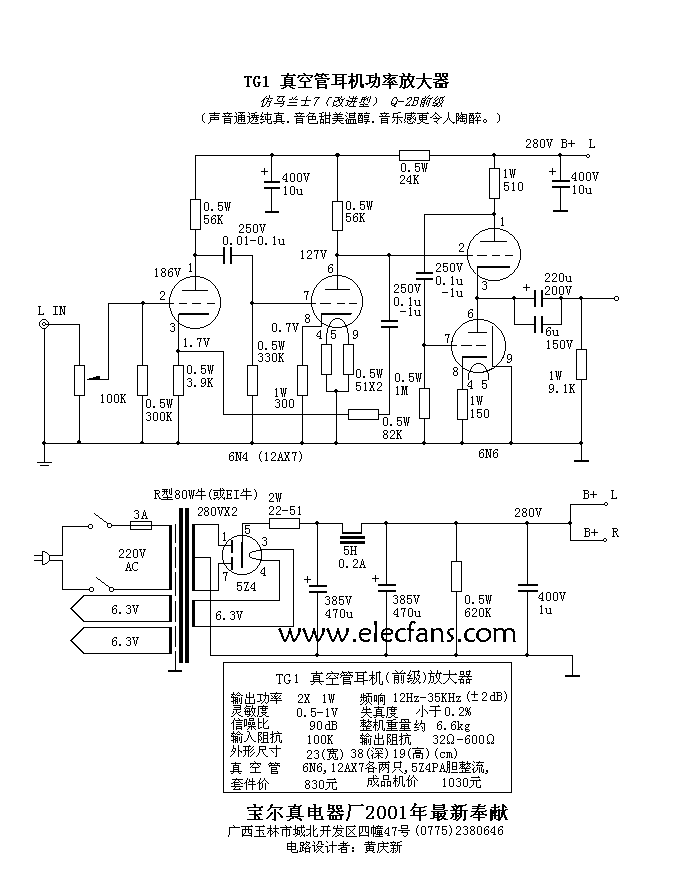
T1A-14真空管單端甲類功放-耳放兩用電路
2008-02-03 17:06:53 2762
2762 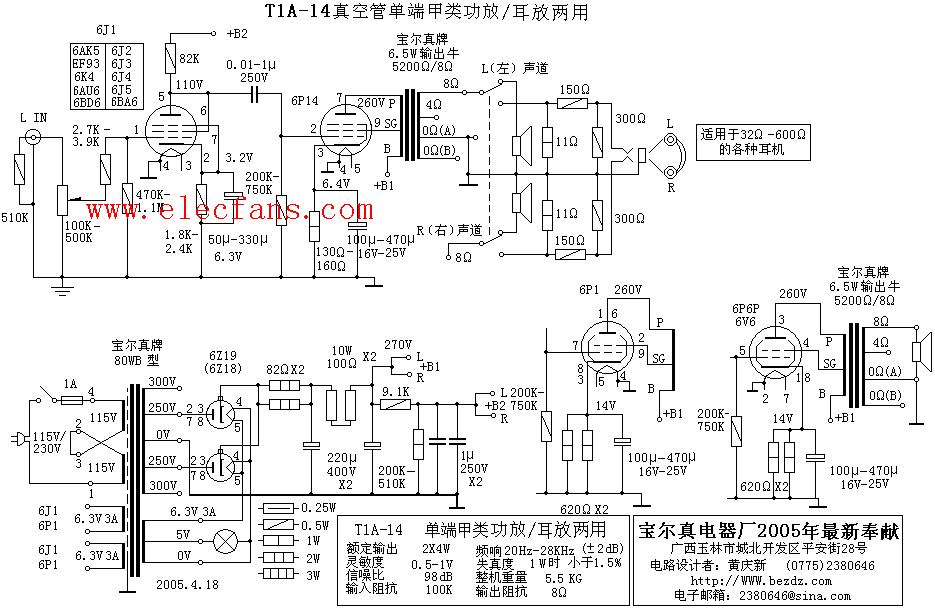
VFD
VFD的發(fā)展歷史
真空熒光顯示屏(Vacuum Fluorescent Display,簡(jiǎn)稱VFD)是20世紀(jì)60年代
2008-10-31 00:15:42 11928
11928 顯示技術(shù)現(xiàn)狀
目前����,主要的顯示器件有CRT、AMLCD����、PMLCD、ELD(場(chǎng)致發(fā)光顯示器)�、FED(場(chǎng)發(fā)射顯示器)、VFD(真空熒光顯示器)�����、OLED和PDP等����。除CRT和投
2008-10-31 00:31:30 1240
1240
真空管電壓表射頻探頭用的穩(wěn)壓器電路圖
2009-04-07 08:52:01 650
650 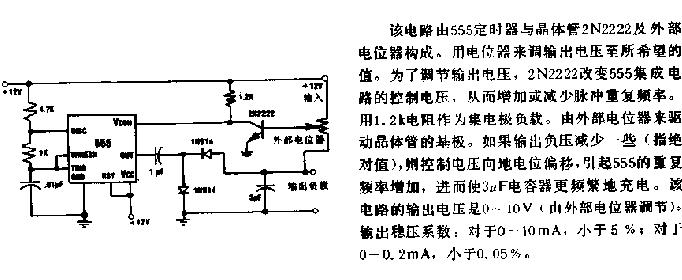
電子管是一種在氣密性封閉容器(一般為玻璃管)中產(chǎn)生電流傳導(dǎo)��,利用電場(chǎng)對(duì)真空中的電子流的作用以獲得信號(hào)放大或振蕩的電子器件����。早期應(yīng)用于電視機(jī)、收音
2009-04-07 14:30:50 13642
13642 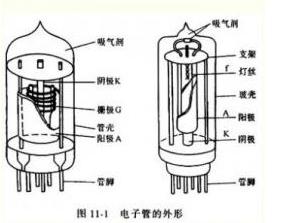
Abstract: This article describes a vacuum fluorescent display (VFD) and some ideal applications
2009-05-02 10:24:32 704
704 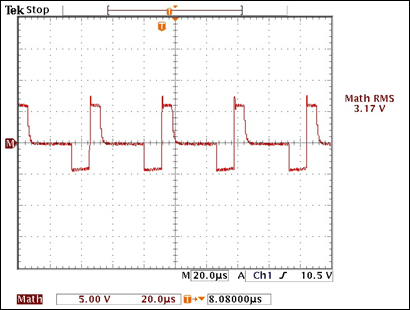
采用真空管的低功率80和40m發(fā)射機(jī)
2009-10-10 11:42:26 1063
1063 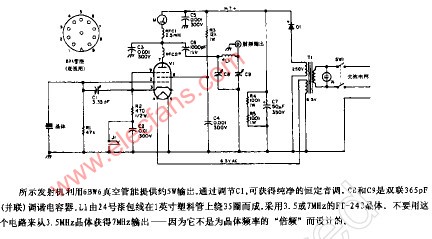
電子行業(yè)辭典中英文對(duì)照(V字為首)v 電壓符號(hào) vacuum tube 真空管 valence electrons 價(jià)電子 value 值 variable 可變的�����、變量 variable ar
2009-11-10 11:02:11 517
517 全玻璃真空管集熱器
全玻璃真空集熱管是由雙層玻璃管組成��,內(nèi)管表面濺射選擇性涂層��,以增加吸收能力���,減小輻射損失�����;內(nèi)管之間抽真空減少對(duì)流
2009-11-14 16:18:56 2305
2305 太陽能熱管真空管集熱器
&nbs
2009-11-14 16:20:31 2872
2872 電子管功放電路輸出變壓器的工作特性
1.輸出阻抗的三要素(1)真空管的內(nèi)阻:真空管放大器的負(fù)載電阻即揚(yáng)聲器的阻抗變化時(shí)����,
2009-12-12 09:35:40 6100
6100 光熱發(fā)電產(chǎn)品及系統(tǒng)
平板集熱器
U型真空管集熱器
2009-12-16 11:01:05 1835
1835 VFD屏顯
真空熒光顯示屏VFD(Vacuum Fluorescent Display)是從真空電子管發(fā)展而來的顯示器件�����,它的基礎(chǔ)特性與電子管的工作特點(diǎn)基本相同�。由發(fā)射電
2009-12-28 10:58:49 1069
1069 汽車電子儀表板(EIC)技術(shù)原理
汽車電子儀表板
1�、真空熒光顯示器(VFD)
2010-03-11 10:17:25 848
848 VFD(熒光管顯示),VFD(熒光管顯示)是什么意思
真空熒光顯示屏(VACUUMF LUORESCENTD ISPLAY)是從真空電子管發(fā)展而來的顯示器件�,由發(fā)射電子的
2010-03-26 17:40:32 8272
8272 真空管的幾種基本電路結(jié)構(gòu)
共陰極接地(Common Cathode)電路
是一個(gè)真
2010-03-31 17:34:44 6771
6771 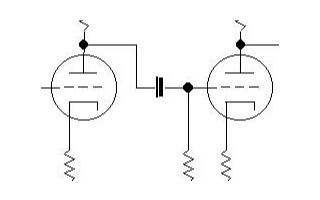
真空管特性規(guī)格名詞解釋
設(shè)計(jì)一臺(tái)擴(kuò)大機(jī)時(shí),我們必需要先瞭解有關(guān)真空管的各種特性規(guī)格�����,因?yàn)?b class="flag-6" style="color: red">真空管特性規(guī)格可以讓我們知道所
2010-04-03 11:00:37 3381
3381 ARM7的鍵盤與VFD顯示器接口技術(shù)
在工業(yè)控制和產(chǎn)品設(shè)計(jì)中�����,一般都要求具有供操作的鍵盤和可視化界面�����。傳統(tǒng)顯示模塊的設(shè)計(jì)一般都是
2010-05-11 14:48:38 1684
1684 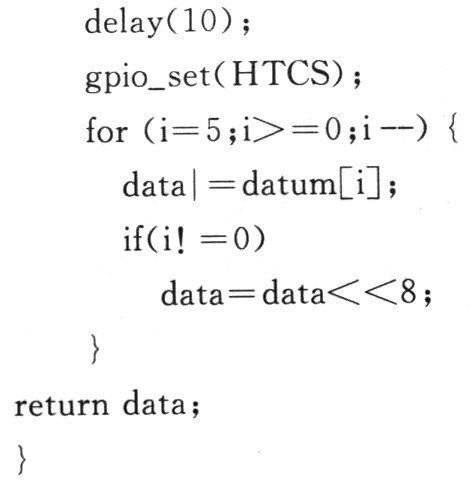
1998 合并式真空管功率放大器�����,全球最小的迷你膽機(jī)��,分體電源設(shè)計(jì)���,精制發(fā)燒級(jí)多層間繞式輸出變壓器,特設(shè)6級(jí)負(fù)反饋控件����,使音色表現(xiàn)更完美��,采用高級(jí)發(fā)燒元
2010-09-11 09:14:06 779
779 1 引言 該參考設(shè)計(jì)提供了一個(gè)能夠獲得真空管熒光顯示器(VFD)
2010-10-14 11:26:05 6674
6674 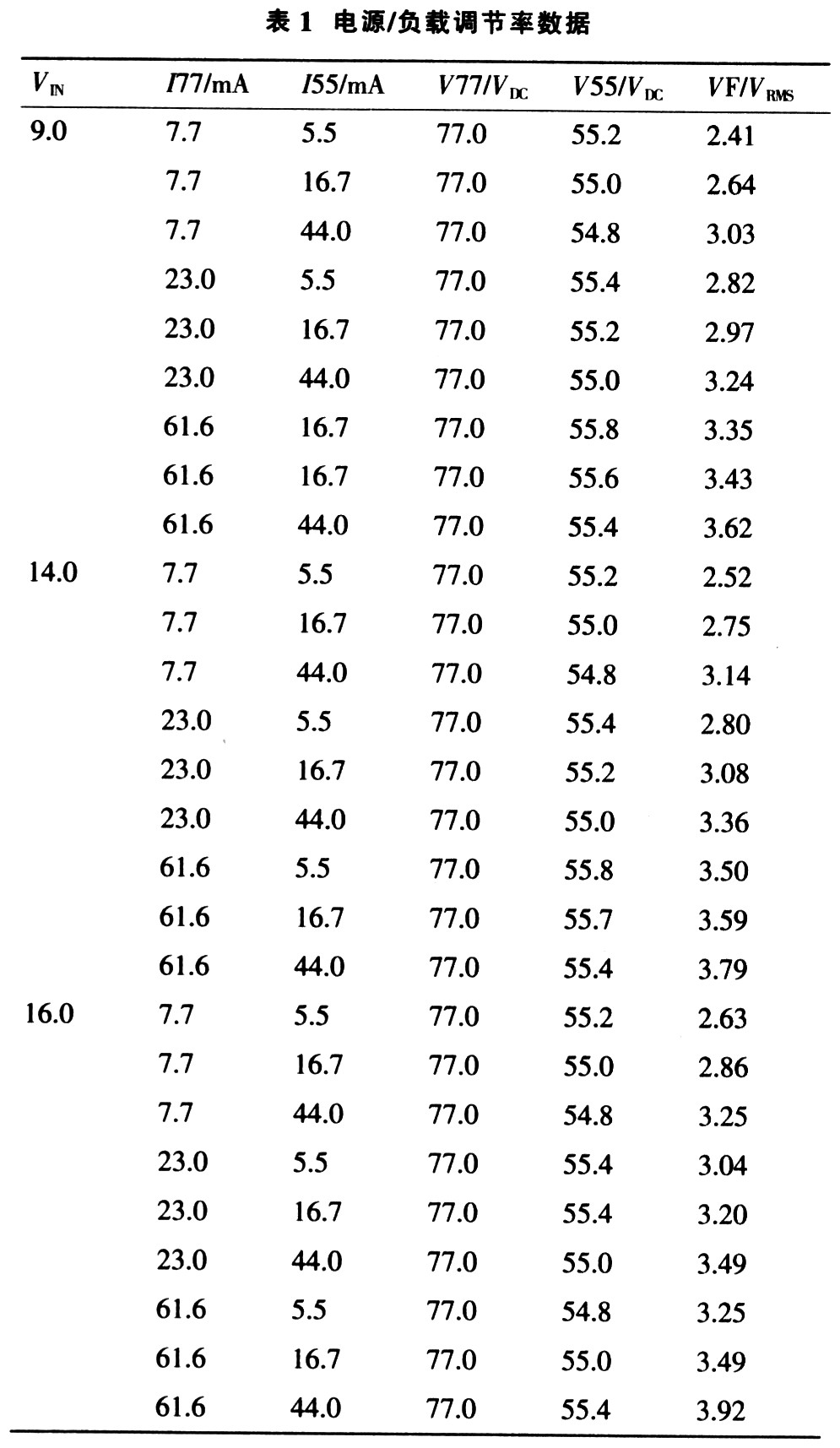
編者按:一般音響玩家面對(duì)真空管機(jī)器,最大的隱憂就是: 真空管什么時(shí)侯該換?特別是一些珍貴的老管子,用壞一只就少一只,再多錢都買不回來.有關(guān)真空管的壽命,正常的廠制機(jī)交到
2010-11-01 16:23:51 1442
1442 本設(shè)計(jì)的由單片機(jī)控制的自動(dòng)加料系統(tǒng)是與料斗式干燥機(jī)配套的加料系統(tǒng)。根據(jù)加料工藝要求����,其工作原理是:先將真空管關(guān)閉,啟動(dòng)電機(jī)�����,用低真空氣流將塑料樹脂粒子送入真空管���,
2012-07-23 14:30:46 38
38 可以如過山車般翻轉(zhuǎn)行駛的磁浮軌道交通模型��、在透明真空管道中飛速行駛的試驗(yàn)列車��、高溫超導(dǎo)磁懸浮列車環(huán)形試驗(yàn)線……11月27日�,在湖南株洲舉辦的“2016軌道交通產(chǎn)業(yè)國(guó)際峰會(huì)專題報(bào)告會(huì)”上����,現(xiàn)場(chǎng)觀眾目不轉(zhuǎn)睛地看著西南交通大學(xué)首席教授張衛(wèi)華展示的高速軌道交通的新科技��。
2016-11-29 10:16:30 1405
1405 顯示器_ 汽車
2017-01-14 15:04:46 71
71 真空管收音機(jī)的放大法
2018-01-29 10:39:59 11
11 真空管內(nèi)構(gòu)造是:靜觸頭焊接在靜導(dǎo)電桿上��,動(dòng)觸頭與可伸縮的金屬波紋管相焊接���,在接觸器支架上安裝三相真空管時(shí),螺栓旋進(jìn)真空管螺孔內(nèi)��,把動(dòng)觸頭拉出�����,在真空管下面適當(dāng)墊些青殼紙,使真空管安裝后達(dá)到平直要求
2019-03-15 15:43:38 6032
6032 真空度測(cè)試儀空斷路器判斷真空管真空度劣化與否的常用方法是工頻耐壓法,這種方法只是能判斷真空度嚴(yán)重劣化的滅弧室��。該真空度測(cè)試儀采用勵(lì)磁線圈,運(yùn)用磁控放電法測(cè)試滅弧室的真空度���,不必拆卸滅弧室�����。同時(shí)采用微機(jī)進(jìn)行同步控制與數(shù)據(jù)采集處理��,使滅弧室真空度的現(xiàn)場(chǎng)測(cè)試靈敏度達(dá)到了10-5Pa�����。
2019-11-14 15:50:00 1453
1453 X射線管用于生成X射線��,用于醫(yī)學(xué)或研究目的��。當(dāng)向真空管二極管施加足夠高的電壓時(shí)��,會(huì)發(fā)出X射線�����,電壓越高��,波長(zhǎng)越短��。為了處理由于電子撞擊而引起的陽極發(fā)熱��,圓盤形陽極旋轉(zhuǎn)���,因此電子在旋轉(zhuǎn)過程中會(huì)撞擊陽極的不同部分,從而改善了冷卻效果���。
2019-12-06 15:26:08 26472
26472 
1.將被測(cè)的真空管兩端斷電��。被測(cè)的真空管不必從開關(guān)柜上拆卸�,但必須使真空管處于正常的斷開狀態(tài),并打開真空開關(guān)進(jìn)出線的刀閘�;若真空開關(guān)還沒有裝上,也需要采取措施使真空開關(guān)動(dòng)靜觸頭處于正常開距狀態(tài)����,并將其置于絕緣良好的支撐架上,同時(shí)要注意磁控線圈的安裝位置��,應(yīng)安裝在滅弧室中間略偏動(dòng)觸頭的位置��。
2020-03-11 10:42:07 589
589 ZKY-2000真空度測(cè)試儀將滅弧室的兩觸頭拉開一定的開距��,施加脈沖高壓��,與殘余氣體分 子發(fā)生碰撞電離��,所產(chǎn)生的離子電流與殘余氣體密度即真空度近似成比例關(guān)系�����。對(duì)于不同的真空管��,在同等真空度條件下
2020-03-15 17:16:00 542
542 ZKY-2000真空度測(cè)試儀將滅弧室的兩觸頭拉開一定的開距,施加脈沖高壓��,與殘余氣體分 子發(fā)生碰撞電離���,所產(chǎn)生的離子電流與殘余氣體密度即真空度近似成比例關(guān)系。對(duì)于不同的真空管��,在同等真空度條件下
2020-03-16 11:57:35 481
481 1.將被測(cè)的真空管兩端斷電��。被測(cè)的真空管不必從開關(guān)柜上拆卸�����,但必須使真空管處于正常的斷開狀態(tài)��,并打開真空開關(guān)進(jìn)出線的刀閘��;若真空開關(guān)還沒有裝上��,也需要采取措施使真空開關(guān)動(dòng)靜觸頭處于正常開距狀態(tài)���,并將其置于絕緣良好的支撐架上���,同時(shí)要注意磁控線圈的安裝位置��,應(yīng)安裝在滅弧室中間略偏動(dòng)觸頭的位置����。
2020-03-19 11:11:02 1330
1330 系統(tǒng)以PIC單片機(jī)作為主控制芯片�,選用VFD(Vacuum Fluorescent Display)真空熒光屏為顯示器,結(jié)合氣敏傳感器�,熱敏電阻,高壓點(diǎn)火器��,繼電器等受控對(duì)象����,通過檢測(cè)外部信號(hào)以及內(nèi)部定時(shí)時(shí)間狀態(tài)可以控制各種受控對(duì)象工作狀態(tài)之間的相互轉(zhuǎn)換,實(shí)現(xiàn)對(duì)廚房電器設(shè)備的智能控制����。
2020-04-07 16:07:38 1054
1054 
來源:羅姆半導(dǎo)體社區(qū)? 3.真空熒光顯示器(VFD) 真空熒光顯示器是一種廣泛用作音/視頻產(chǎn)品和家用電器的顯示器。它是將陰極���、柵極和陽極封裝在真空管殼內(nèi)的一種三極電子管式的真空顯示器件�����。它是陰極發(fā)射
2022-12-08 18:14:17 1039
1039 ? 這些真空器件經(jīng)歷了冷戰(zhàn)時(shí)期�����,推進(jìn)了粒子物理學(xué)的發(fā)展�,使癌癥病人得到治療,還使披頭士樂隊(duì)的音樂更動(dòng)聽���。 在一個(gè)由無數(shù)固態(tài)器件支撐的時(shí)代����,我們還需要關(guān)注真空管嗎�����?絕對(duì)需要��!因?yàn)閺呢S富性����、戲劇性和純粹
2021-01-26 13:54:15 2196
2196 如果有人告訴我��,他一生的職業(yè)生涯都會(huì)耗費(fèi)在研究真空管上�����,我會(huì)說:“不可能,這太夸張了�����!” 卡特?M.阿姆斯特朗(Carter M. Armstrong)就是這樣的人�����,在他的職業(yè)生涯中�����,有40年左右
2021-01-26 13:59:53 1312
1312 一個(gè)簡(jiǎn)單且低成本的電子管頭真空管前置放大器電路圖分享���。
2022-05-09 17:08:40 2131
2131 
電子發(fā)燒友網(wǎng)站提供《A類真空管混合耳機(jī)放大器開源項(xiàng)目.zip》資料免費(fèi)下載
2022-08-01 09:42:48 3
3 電子發(fā)燒友網(wǎng)站提供《DIY真空管測(cè)試儀.zip》資料免費(fèi)下載
2022-08-10 09:30:01 3
3 電子發(fā)燒友網(wǎng)站提供《vfd48顯示器開源分享.zip》資料免費(fèi)下載
2022-10-20 14:51:36 4
4 電子發(fā)燒友網(wǎng)站提供《將任何VFD串行顯示器連接到Arduino的最簡(jiǎn)單方法.zip》資料免費(fèi)下載
2022-11-02 10:58:40 1
1 當(dāng)時(shí),他正在進(jìn)行燈絲(碳絲)的壽命測(cè)試�����。在燈絲旁邊����,他放置了一根銅絲��,但銅絲并沒有接在任何電極上�����。也就是說�,銅絲沒有通電�。
2022-12-30 09:45:32 930
930 LED(Light Emiting Diode)是發(fā)光二極管的縮寫。數(shù)碼顯示是由7段發(fā)光二極管構(gòu)成的�,數(shù)碼管應(yīng)用非常普遍。除此之外��,還有液晶顯示器(LCD)��、真空熒光顯示器(VFD)���、等離子顯示器(PDP)。
2023-03-13 14:19:24 15287
15287 
這款 100 W 音頻閥放大器電路可以產(chǎn)生高達(dá) 100 瓦的輸出���,具有出色的音頻質(zhì)量�����。放大電路由一組真空管組成��。對(duì)于發(fā)燒友來說��,真空管放大器是特別的東西��。
2023-05-13 17:33:30 880
880 
該參考設(shè)計(jì)提供了一個(gè)能夠獲得真空管熒光顯示器(VFD)供電電源的解決方案����,非常適合汽車應(yīng)用。 設(shè)計(jì)包括完整的原理圖和材料清單(BOM)����,并給出了負(fù)載/電源調(diào)節(jié)率的測(cè)試數(shù)據(jù)及其它測(cè)試結(jié)果。
2023-06-12 16:14:50 793
793 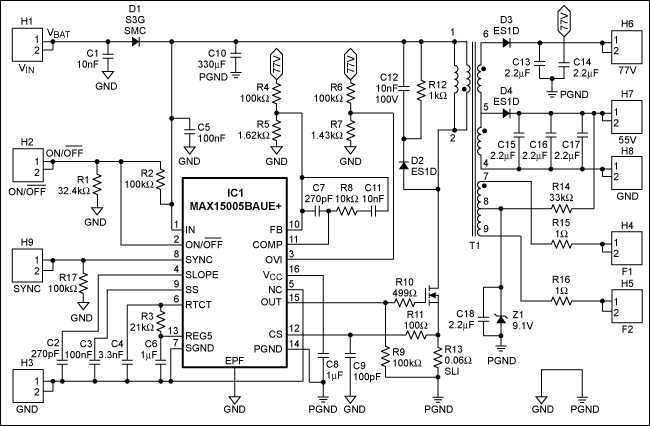
這里再次使用使用真空管的簡(jiǎn)單推挽放大器電路��。這種設(shè)計(jì)非常簡(jiǎn)單����,如果構(gòu)建得當(dāng),會(huì)帶來良好的音頻質(zhì)量���?;ヂ?lián)網(wǎng)上電路的每個(gè)塊都有很多�����,所以我將對(duì)此進(jìn)行一些詳細(xì)介紹。在查看該放大器的實(shí)際設(shè)計(jì)之前���,讓我們快速瀏覽一下其規(guī)格���。
2023-06-18 16:48:02 971
971 
我試圖在我的設(shè)計(jì)中復(fù)古。當(dāng)我提到復(fù)古這個(gè)詞時(shí)����,我正在談?wù)?b class="flag-6" style="color: red">真空管的使用,我很確定你也會(huì)同意它����。該真空管振蕩器可用于測(cè)試目的,并使用二極管作為幅度穩(wěn)定和自動(dòng)增益控制����。
2023-06-18 16:53:43 747
747 
真空管似乎是原始的��,被認(rèn)為不再存在的東西�����。但相信我��,仍然有一些地方真空管被認(rèn)為是非常方便的。在此基礎(chǔ)上���,我想出了一個(gè)簡(jiǎn)單的真空管放大器的設(shè)計(jì)����,它能夠提供 17 瓦的輸出功率�。讓我們進(jìn)入這個(gè)電路的規(guī)格和工作原理
2023-06-18 16:55:39 1199
1199 
Photonis 單光子探測(cè)解決方案基于真空管探測(cè)器技術(shù)。該技術(shù)結(jié)合了高檢測(cè)效率 (QE) 和極低的暗計(jì)數(shù)(暗噪聲)��。發(fā)出脈沖后���,檢測(cè)器在檢測(cè)到光子后生成脈沖的現(xiàn)象是最小的�����,并且停滯時(shí)間是非刺激性
2023-07-26 06:48:24 387
387 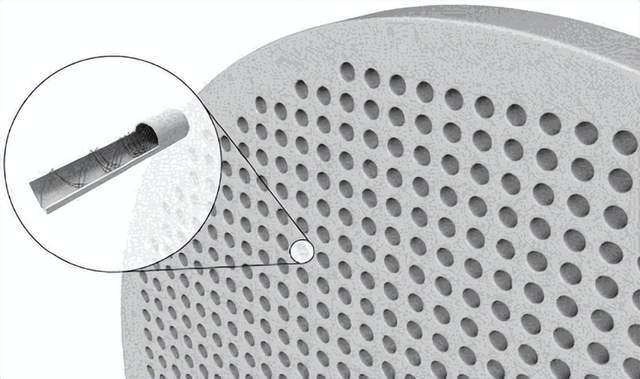
晶體管和真空管有哪些區(qū)別�? 晶體管和真空管是兩種不同的電子元件。都是常見的電子元件���,但它們之間有很多區(qū)別��。這些區(qū)別主要涉及到它們的外觀����、構(gòu)造、工作原理����、熱量生成、性能參數(shù)等�。這篇文章將詳細(xì)介紹這兩種
2023-08-25 15:29:39 1989
1989
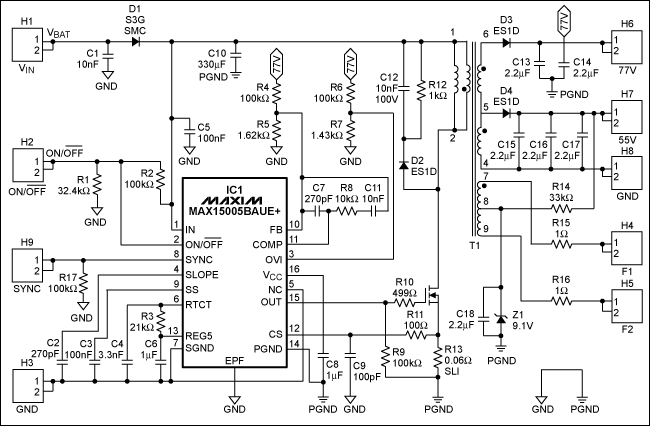
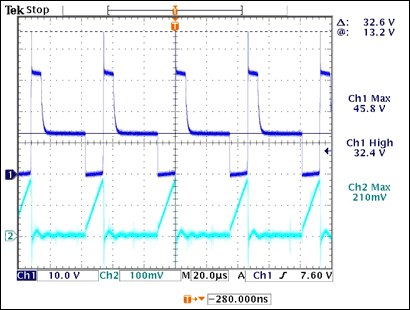
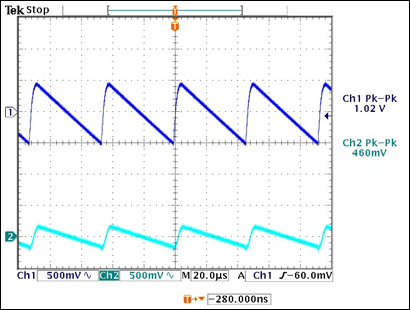
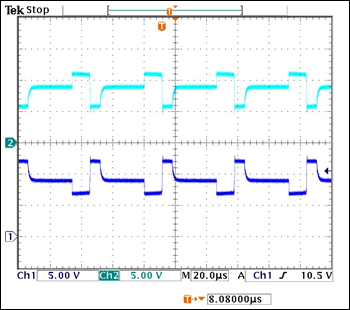
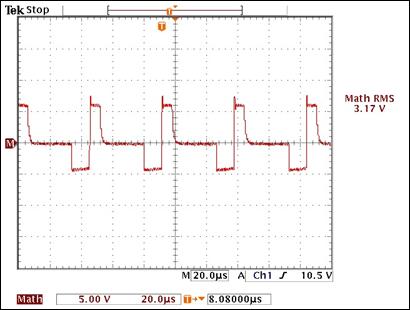
 電子發(fā)燒友App
電子發(fā)燒友App





















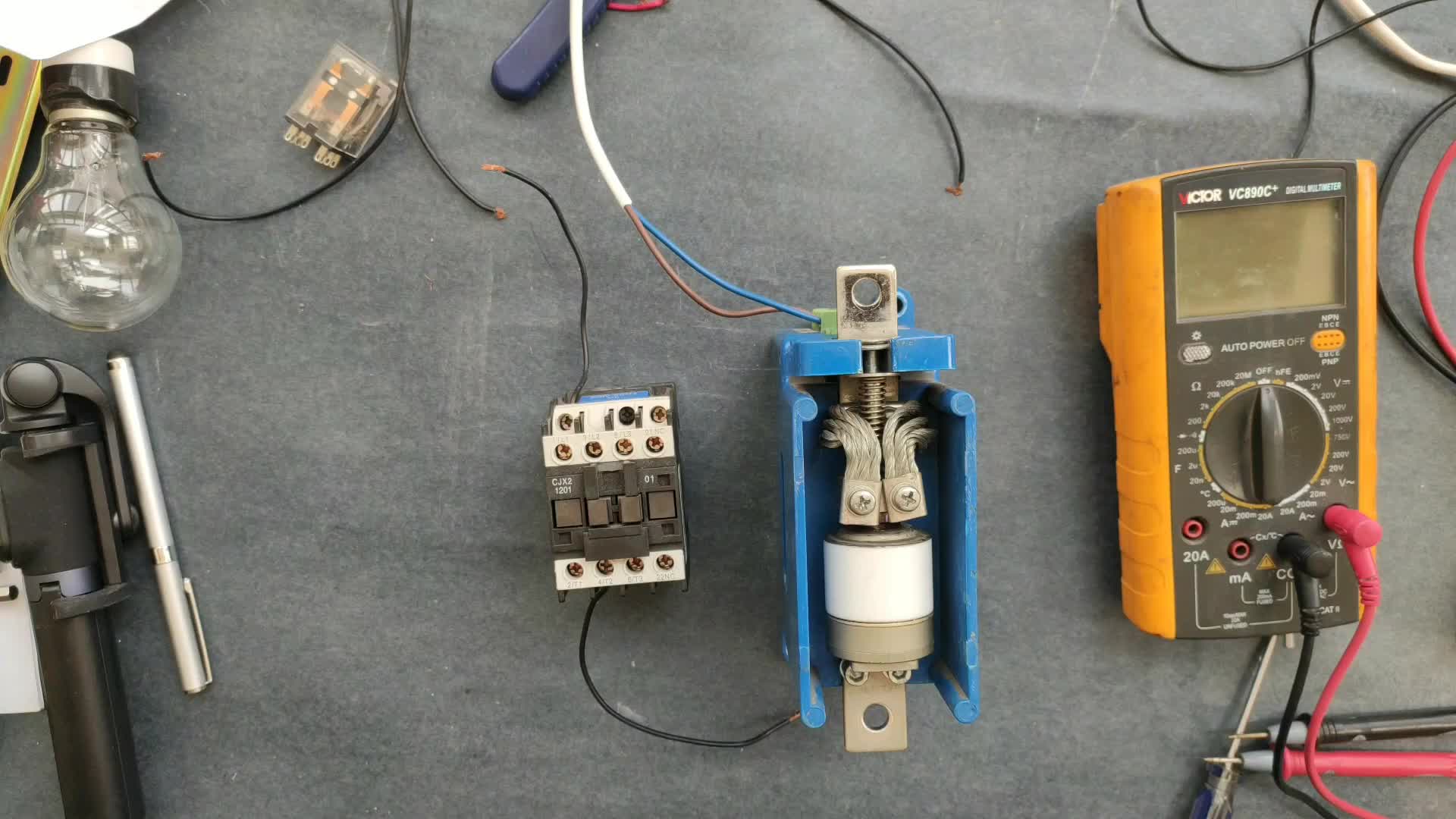




















評(píng)論